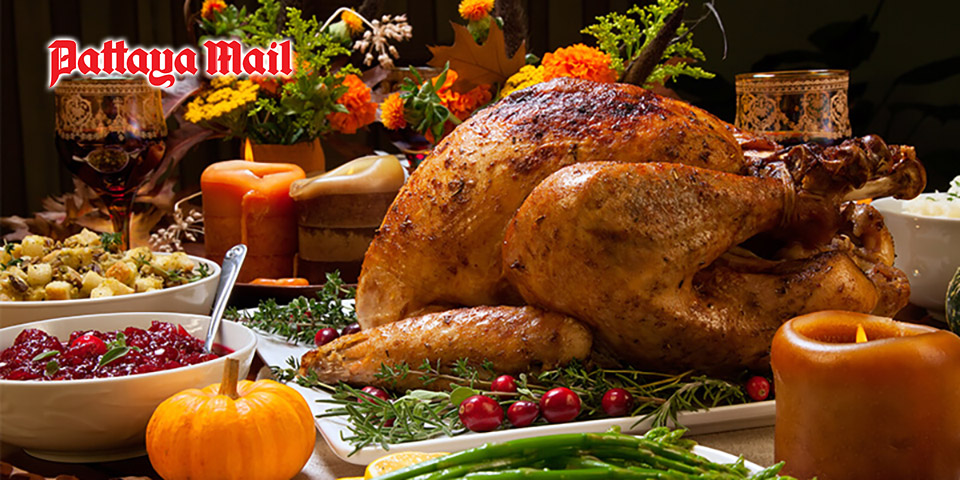
The Wikipedia article about Turkish wine begins, “Turkish wine is wine made in Turkey.” Well, honestly. Who would have guessed? For years, I had always assumed that Turkish wine was made in Brazil.
We don’t often see Turkish wine in these parts, so you might be surprised to know that Turkey has two million acres of vineyards and it’s the world’s fourth-leading producer of wine grapes. These include all the “international” grape varieties but also some Turkish ones with curious-sounding names such as Adakarası, Papazkarası, Kuntra, Karalahna and Horoz Karası.
My mind drifted to Turkish wine the other day, while I was secretly eating a bar of Fry’s Turkish Delight which used to be one of my childhood favourites. These little bars, made from rose-flavoured gel and covered in milk chocolate, first appeared in Britain in 1914. The advertising slogan claimed that they were “full of Eastern promise”, an evocative phrase which, when you stop to think about it, doesn’t mean anything at all. The wrapper looks much the same, except that today they are made in Poland. Anyway, the subject today is not Turkish wine or even Turkish Delight, but about what wine to drink with turkey. So I am sorry if I have misled you, and I apologize if this revelation comes as a disappointment. But life is full of disappointments so another small one probably won’t make much difference.
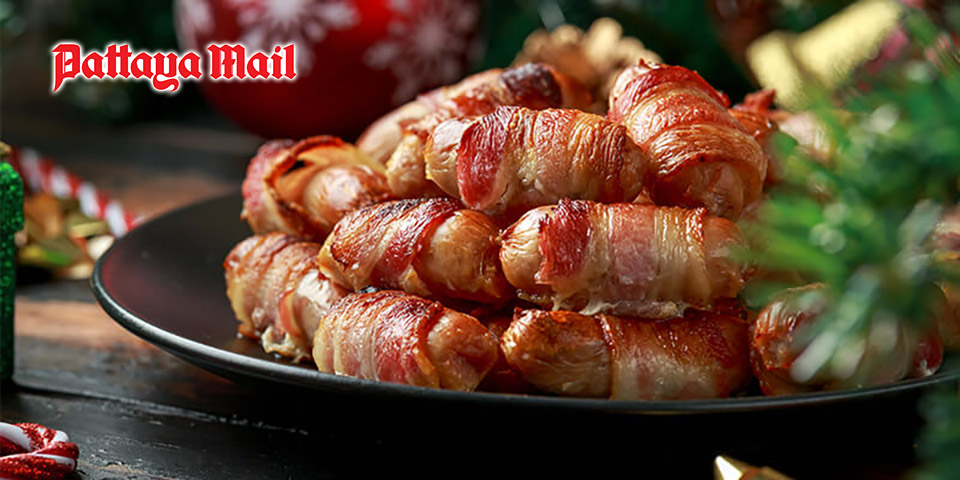
If you are a creature of tradition, it’s possible that quite soon, you have a Christmas meal on the agenda. Whether it’s at a restaurant or a do-it-yourself job in the kitchen, at some point you may want to select some wine. At least, I hope you do, for a Christmas meal without wine would be like a day without sunshine. If you plan to eat out, it’s a good idea to check the restaurant’s wine list online so that you can decide in advance. This is better than keeping your friends waiting impatiently while you poke about tentatively among the items on the wine list. Of course, it helps if you know your friends’ preferences in advance. In these challenging times, few people can afford to have four or five different wines on the dining table, but if you are eating with friends, a couple of bottles – one white and one red – would be a good start.
Wine is relatively expensive in Thailand and restaurants mark up the price even higher. If you can afford the top-end stuff, then go for it. You probably won’t need my suggestions anyway, which in general are limited to fairly inexpensive wines that are easily available. If you are planning a do-it-yourself Christmas bash, there are excellent selections at Wine Connection, Villa Supermarket and the specialist wine shop Vines to Vino half way up Thepprasit Road.
Let’s start at the very beginning – as Maria sang in The Sound of Music. For a pre-dinner apéritif my personal choice would be a crisp, cold and dry Fino Sherry to stir memories of times long gone. But I am being a bit old-fashioned because sad to say, sherry has rather fallen out of fashion outside Spain. In any case you’d be hard-pressed to find a decent Fino in this neck of the woods. A white sparkler is a more popular apéritif these days. Champagne is the classic choice, but only if you and your friends appreciate it. A cheaper alternative is Italian Prosecco, usually available for around Bt 760 upwards. Be sure to check the label, because sparkling wines labeled “Extra Dry” are often slightly sweet. If you want a crisp, dry-as-a-bone sparkler look for one labelled “Brut” or “Extra Brut”.
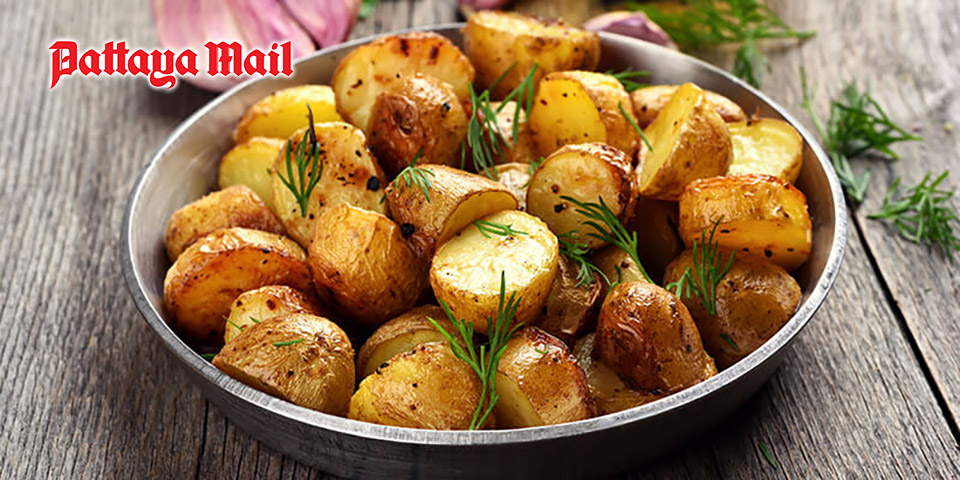
For typical Christmas food, the French wine regions of Burgundy or Alsace would be my first choices if money were no object. Most dishes that make up a traditional Christmas meal (or almost any meal, for that matter) can be enhanced with wines from these two regions alone. You may have your favourites from elsewhere of course, so feel free to drink what you want. Just remember that pairing wine with food boils down to either matching the character of the food with that of the wine, or going for contrast. Now I admit that this is a bit simplistic, but it’s a good enough rule-of-thumb for most of us. Right. Let’s get started.
One of the most popular Christmas starters is smoked salmon, and a dry white with a good dollop of acidity to off-set the oiliness is a good choice. Bone-dry Chablis (SHA-blee) would be excellent though rather pricey, while Sauvignon Blanc (SOH-vihn-yohn BLAHN) is a more affordable option. If you want to match the oily texture, try a Gewürztraminer (guh-VURTS-trah-mee-ner) from Alsace. For ham-based starters, a dry Alsatian or German Riesling (REEZ-ling) will go well. But quite honestly, any dry white wine will work with these dishes, provided it’s not too assertive and not loaded with fruit.
Turkey of course is the usual centerpiece for Christmas meal, surrounded with herby stuffing, rich gravy, potatoes and vegetables, sausages and savory side-dishes. If you want to keep everyone happy, have white and a red available. But remember that turkey is a white meat with low fat content and best suited to a dry, full-bodied white or a light-bodied red with low tannin. Assertive and tannic red wines would overpower the delicate flavour so forget them. Chablis works well with turkey but it’s expensive and some people find the cheaper ones a bit acidic. While Alsatian Gewürztraminer is a good option but a full-bodied oaky Chardonnay would be a really safe choice. My personal preference would be a full, dry white Chardonnay from Burgundy like a Mâcon. Cheaper options include Pinot Gris (PEE-noh GREE) or the Italian version, Pinot Grigio (PEE-noh GREE-joh) but sometimes they feel a bit thin on the palate.
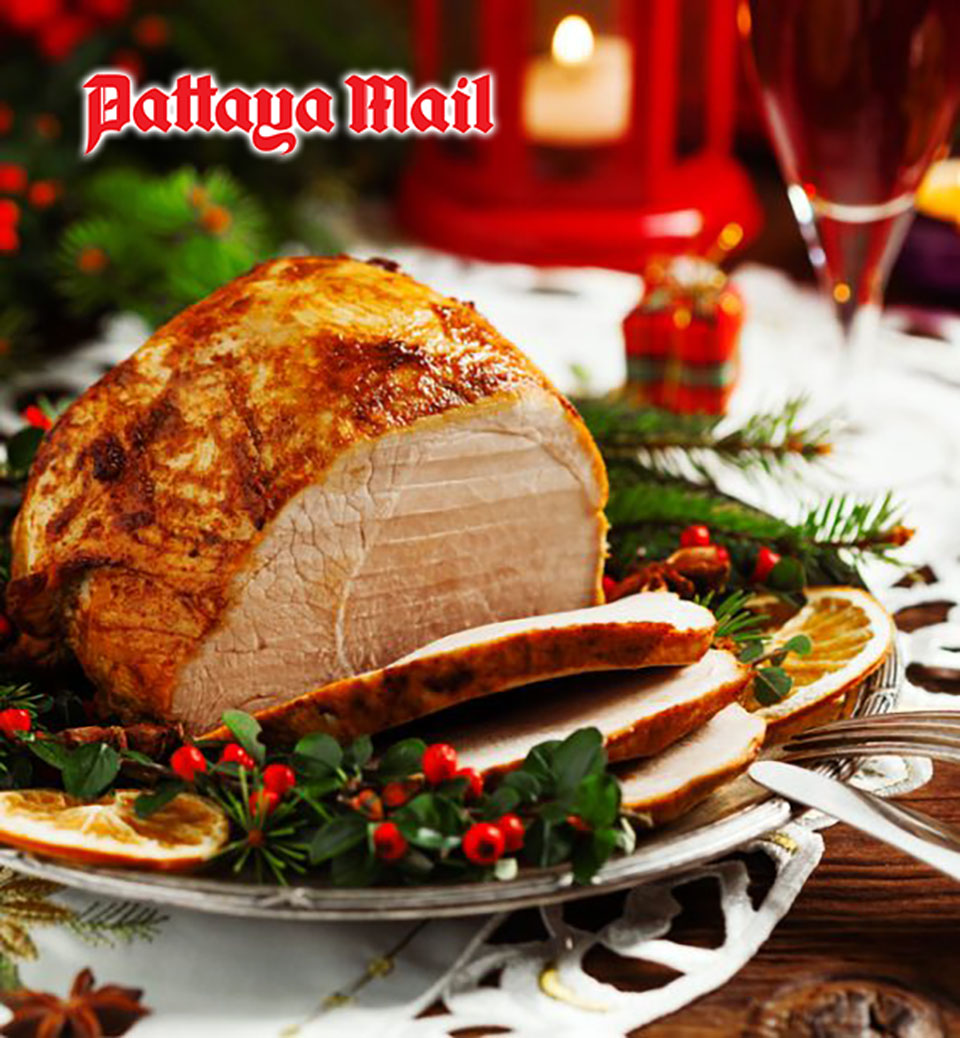
As to the red options, I would avoid Cabernet Sauvignon and Merlot entirely and instead look for a light Pinot Noir (PEE-noh NWAH) from Burgundy or New Zealand. The fruity, earthy qualities and low tannin would go well with turkey. If you can afford it, go for one of the better commercial brands such as Jadot, Duboeuf and Bouchard. Beaujolais (boh-zhuh-LAY), the light, fruity and fresh red wine made from the Gamay grape would also work well with turkey and should be served slightly chilled. The wine I mean, not the turkey.
Right, we’ve done the main course. Now what – cheese or dessert? The French usually serve the cheese first but the Brits do it the other way around, although in our cholesterol-conscious times it might be considered a bit excessive to have both. Dessert wines make a delightful end to a special meal. The classic French dessert wine, Sauternes (soh-TERN) is sometimes available here and the cheapest retails at around Bt 1,300. At a lower price tag, there are some good Moscato wines on the market especially from Australia. A decent Moscato (moss-KAH-toh) retails from about Bt 650 upwards and it makes a good partner for fruit pies, fruit desserts or even blue cheeses. Tawny Port also makes a traditional but more expensive partner for Christmas pudding and mince pies.
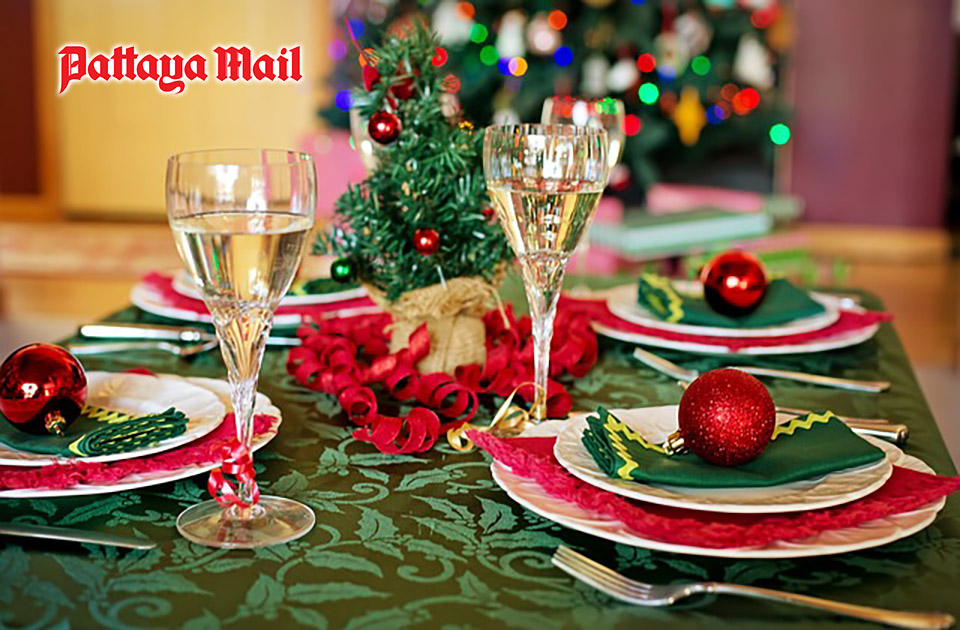
Contrary to popular belief, few red wines work well with cheese, partly because the tannins clash not only with cheese but also with the inevitable salty cheese biscuits. It’s impossible to find a single wine – red or white – that will go with everything on the cheeseboard. The issue is so complex that there are several books and wine and cheese pairing – I have a couple of them myself. Generally, I prefer dry whites such as Sauvignon Blanc with soft cheeses such as goat cheese, Brie and Camembert or even with Swiss cheeses like Emmenthal and Gruyère. Some writers recommend Cabernet Sauvignon with Cheddar cheese, but I am not convinced. Strong-smelling cheeses often work best with sweeter wines, which is why Aged Port and Blue Stilton are a classic combination. But quite honestly, by this late stage of the meal most people will be content to finish up any wine left over from the main course. You really can have too much of a good thing. Whatever you do, be sure to enjoy your Christmas bash if you have one. Good food, good wine and good company is always an excellent combination.
And me? Oh, thank you for asking. My Christmas dinner will be served at about 8.30pm and it will probably be limited to a small but tastefully-arranged salad. We professional pole-dancers have to keep in shape, you know.






